
Whale Sharks Beware!
be forced to move into cooler environments, and this would make them 15,000 times more likely to collide with ships.The study, published in Nature Climate Change, was led by the Marine Biological Association and co-authored by Associate Professor Ana Sequeira and Dr Mark Meekan, from The University of Western Australia’s Oceans Institute, and Dr Luciana Cerqueira Ferreira and Dr Michele Thums from the Australian Institute of Marine Science (AIMS) and adjuncts at UWA’s Oceans Institute.“Moving to cooler regions may protect whale sharks from climate change, but we found it can also
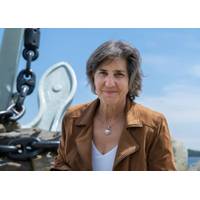
Happy to be Blue
in love with being at sea.”After Dalhousie, Waite completed her PhD in biological oceanography at the University of British Columbia and then held postdoctoral positions at Woods Hole Oceanographic Institute and Victoria University in New Zealand. She soon took a professorship at the University of Western Australia in Perth, where she taught and led research for 17 years. In 2014, Waite became section head of polar biological oceanography at the Alfred Wegener Institute for Polar and Marine Research before returning to Halifax and her alma mater in 2018.Q: Within your career, do you have a most
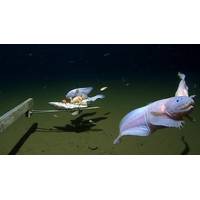
Scientists Find World's Deepest Fish
deeper - by a joint Japanese-Australian scientific expedition.The expedition's chief scientist, Professor Alan Jamieson, said on Monday that two snailfish were caught in traps set 8,022 metres underwater in the Japan Trench, south of Japan, during a two-month voyage by a team from the University of Western Australia (UWA) and the Tokyo University of Marine Science.The snailfish, of the Pseudoliparis belyaevi species, are the first to be caught below 8,000 metres, the expedition said. It wasn't immediately clear how big the fish were, but the species has been recorded as reaching a length of
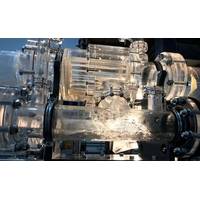
UWA Engineers Supporting Worley's Enhanced Subsea Gas Tieback Project
To develop stranded gas reserves in remote regions, chemical engineers from The University of Western Australia are cooperating on novel cost- and carbon-reduction technology.Professor Zachary Aman, Chevron Woodside Chair in Long Subsea Tiebacks, Research Fellow Dr Bruce Norris, and a team of researchers from UWA School of Engineering will provide complex simulation expertise to The Enhanced Subsea Gas Tieback Project led by Worley – an engineering services company."Over the past decade, UWA has established itself as a world leader in characterizing and predicting complex flow behaviors
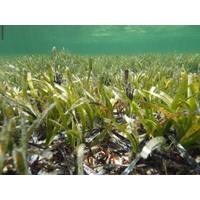
4500 Years Old & 180km: World's Largest Known Plant Discovered in Shark Bay
Largest known plant on earth discovered at Shark Bay, and it's 4,500 years old.Researchers from The University of Western Australia and Flinders University have located what is believed to be the largest plant in the world – an ancient and incredibly resilient seagrass stretching across 180km that is estimated to be at least 4,500 years old.The discovery of the single plant or ‘clone’ of the seagrass Posidonia australis in the shallow, sun-drenched waters of the World Heritage Area of Shark Bay in WA, is detailed in a new study published in Proceedings of the Royal Society B.
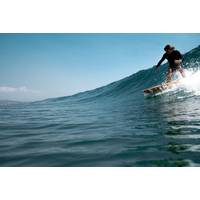
What is the Value of a Wave?
many of us cannot yet travel far away. But with 85% of Australians living by the coast, many of us can still catch a wave at our doorstep – and that is priceless.AuthorsAna Manero is a research fellow at Australian National University.Alaya Spencer-Cotton is a research assistant at The University of Western Australia.Javier Leon is a senior lecturer at the University of the Sunshine Coast.Neil Lazarow is a senior research consultant at CSIRO.(Source: The Conversation
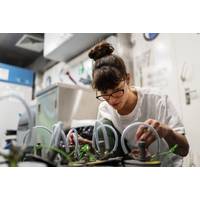
Subsea Discovery: SOI Releases Images from Study of NW Australian Deep Corals
with the scientists in the Artist-at-Sea berth, capturing the beauty of Ashmore Reef in her paintings created on-board. She was also able to paint a panel for the deep-diving robot, SuBastian. The expedition was led by Australian Institute of Marine Science, and included scientists from the University of Western Australia, Curtin University and Western Australia Museum with support from Parks Australia.The Ashmore Reef study is the final Australia expedition for Schmidt Ocean Institute’s R/V Falkor after nine unique projects as part of a 16-month initiative. “This expedition was filled with
'Unusual' Underwater Rivers Found Along Australia's Coastline
Scientists from The University of Western Australia have discovered underwater rivers along most of Australia’s continental shelf that are unique and do not occur at this scale anywhere else in the world. The research has been published in Nature Scientific Reports.The discovery was made using UWA-operated ocean gliders - autonomous underwater vehicles (AUV) that propel themselves through the water and collect important data about our oceans. The gliders are also part of the national Integrated Marine Observing System.The underwater rivers form in winter months and are currently at their peak.
Deep-Sea Coral Gardens, Graveyards Discovered Off Australia
Canyon Marine Park is already known as a biodiversity hotspot for marine species such as whales and dolphins, however, a recent expedition focused on the deep sea has now revealed rich and diverse ecosystems inhabiting the cold waters deep within the canyon. Led by researchers from the University of Western Australia (UWA), these discoveries were only made possible by the philanthropic Schmidt Ocean Institute’s (SOI) deep-sea remotely operated vehicle, SuBastian, which is capable of sampling depths to 4,500 meters.The team strategically collected deep-sea corals, associated fauna, seawater


 February 2025
February 2025





